Jujuy: A Province of Contrasts
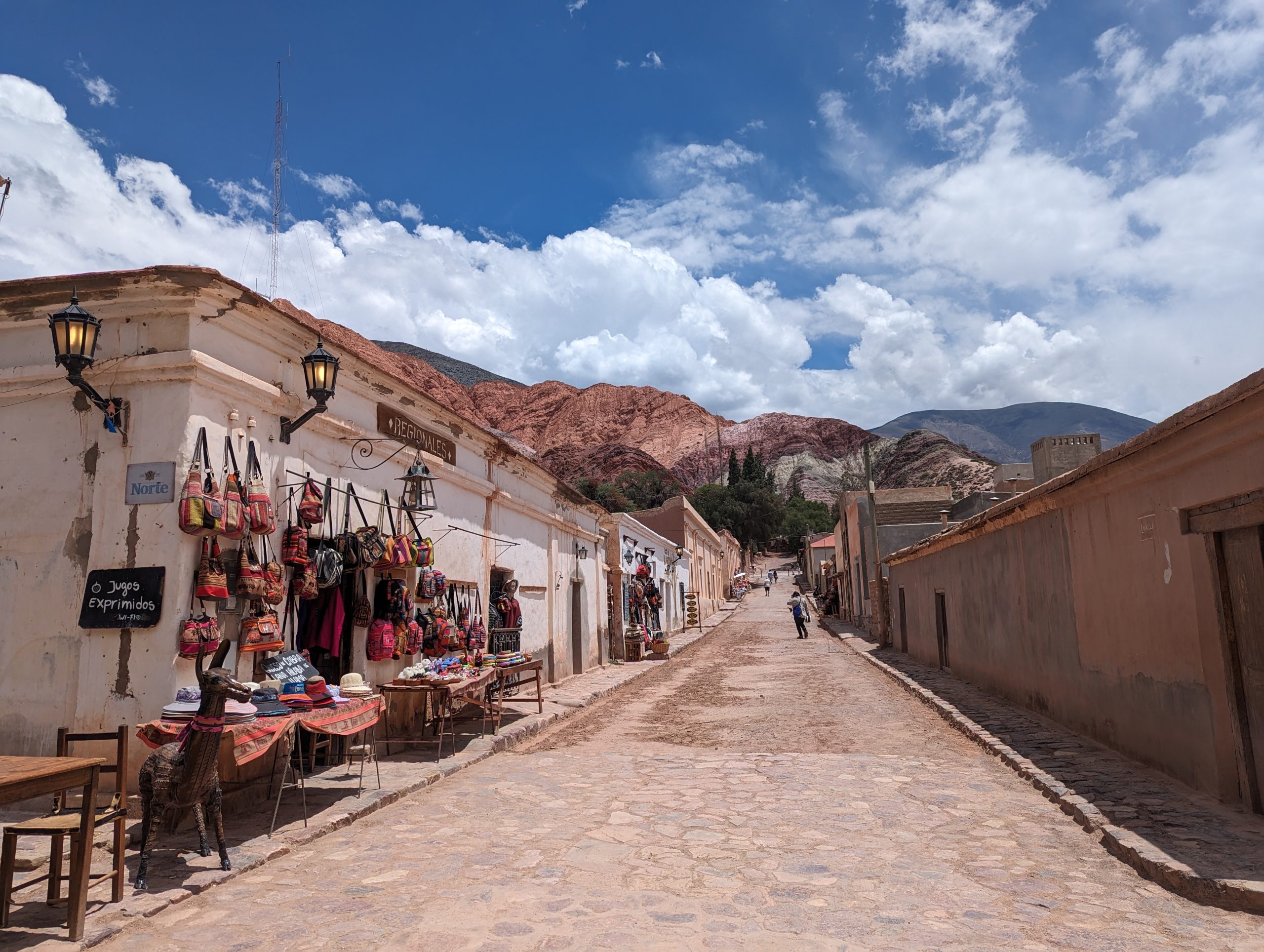
Jujuy province, in the north-west of Argentina, has a broad mix of altitudes and landscapes and a vast history of resistance to invasions, first from the Inca empire and later from the Spaniards. This all makes for a fascinating time!
To get there we took a flight from Buenos Aires to San Salvador de Jujuy (SSJ), the capital of the province. We only spent a night there before heading north of the city through route 9, a two-lane road where the landscape changes very drastically from bright green to shades of red, brown, gray and bluish. Every curve in our drive was full of surprises, and it was a place unlike any we had seen before.
Things to do in Jujuy:
Pumamarca
The diversity of the colors in the mountain here are dramatic. In back of the town, there are all shades of orange/red merging in different directions. When you look to the other side of the town you will notice a dark green-bluish mountain. And on the other side, the colors of the mountains are more on the green side with large cactuses. The color and materials of the houses seem to blend in perfectly with the surroundings. It is a small town where tourists can stroll peacefully, look for crafts in the local market and have an authentic dining experience. The town is pretty and it’s a must for someone visting the region.
There are other towns north of San Salvador where people usually spend their nights. We chose Tilcara with little information and spent six nights there. After visiting several villages we believe that was the right choice for us as it is a charming town with many options for dining, and it is a central based for exploring several other towns and sites of interest.
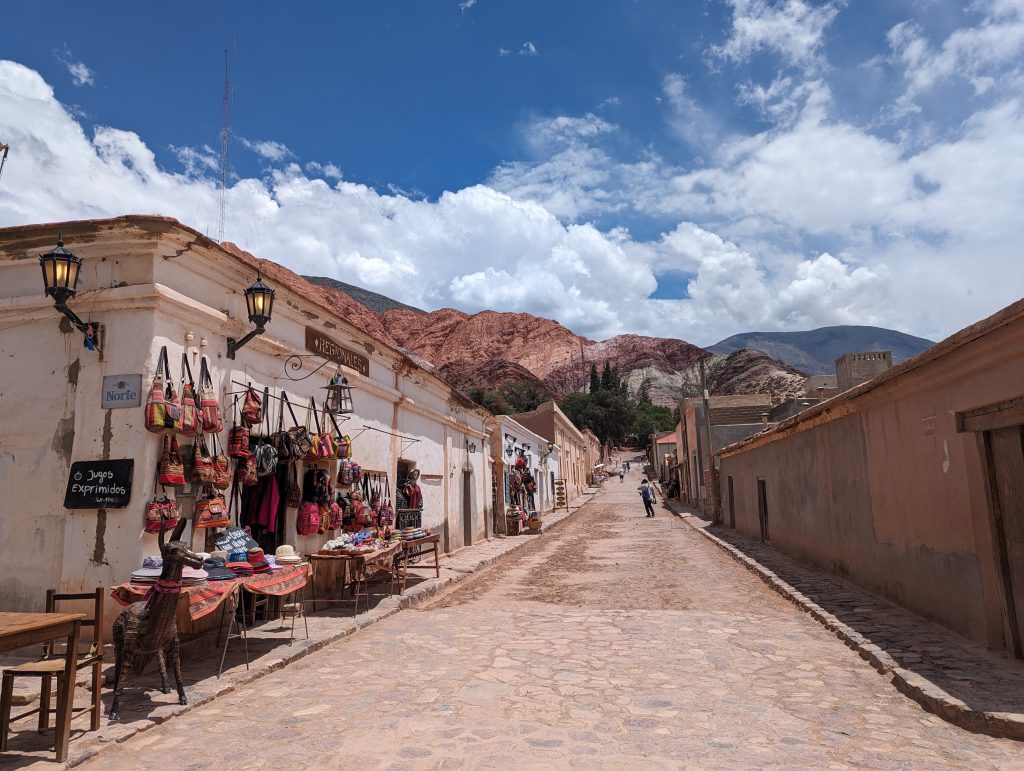
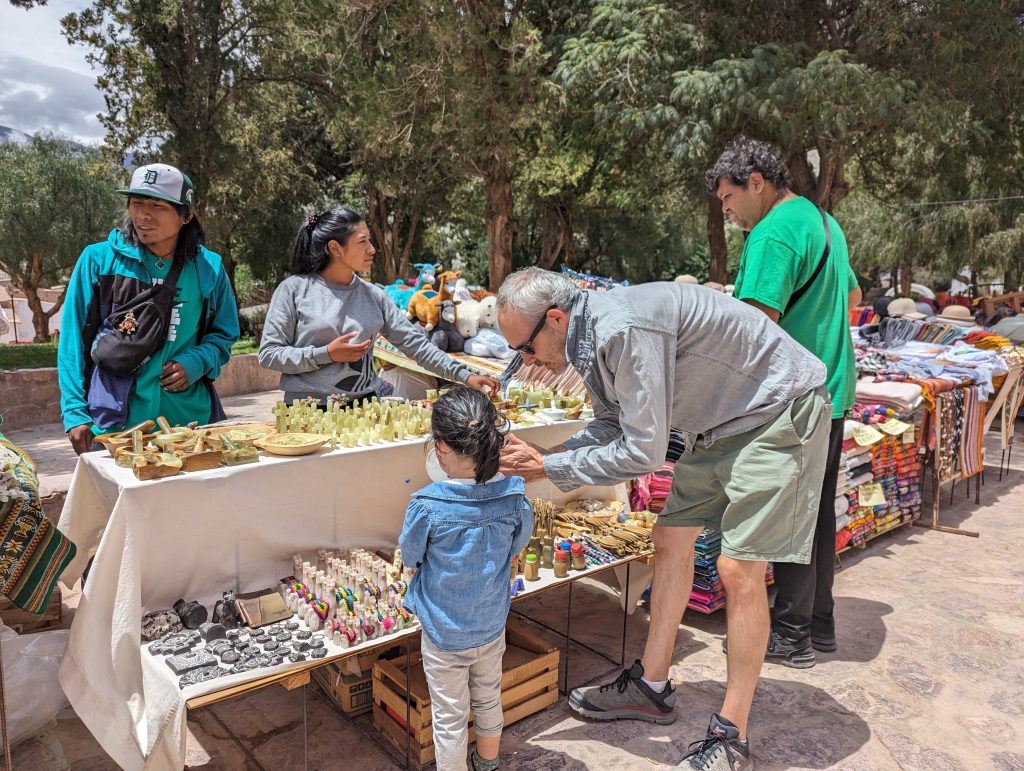
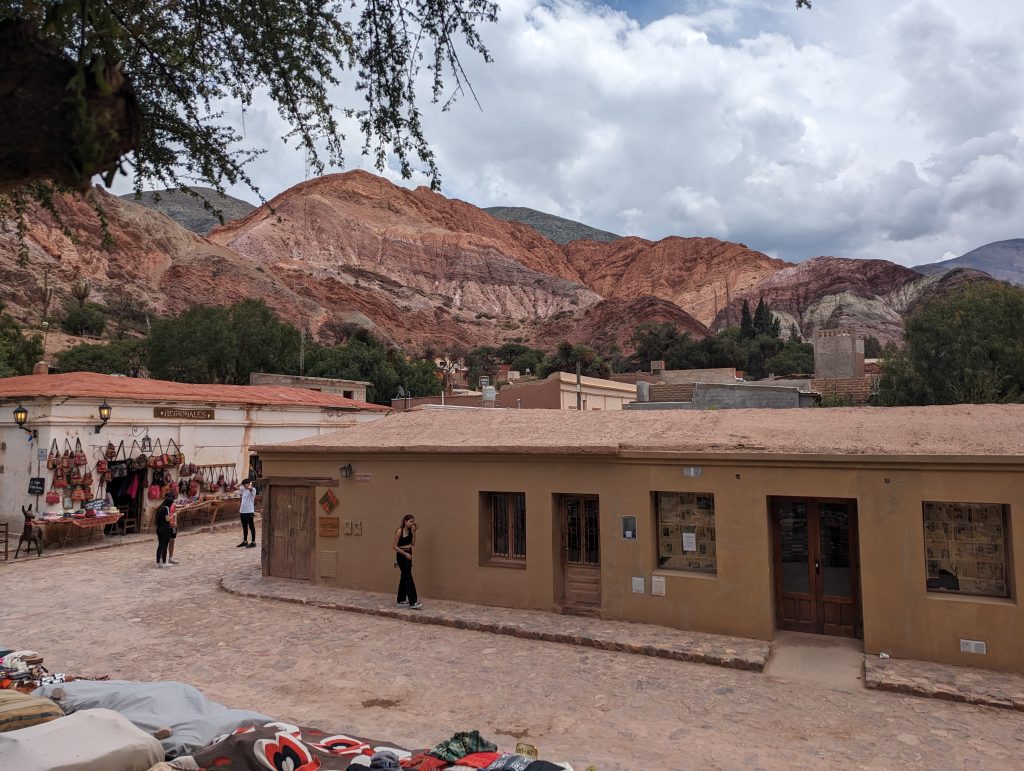
Tilcara
The town has a privileged location between Purmamarca and Humahuaca. It has a mix of locals and tourists. There is a variety of restaurants, bars and places to hang out. Any time we took a stroll in town or a drive nearby we would admire the beauty of the mountains surrounding Tilcara.

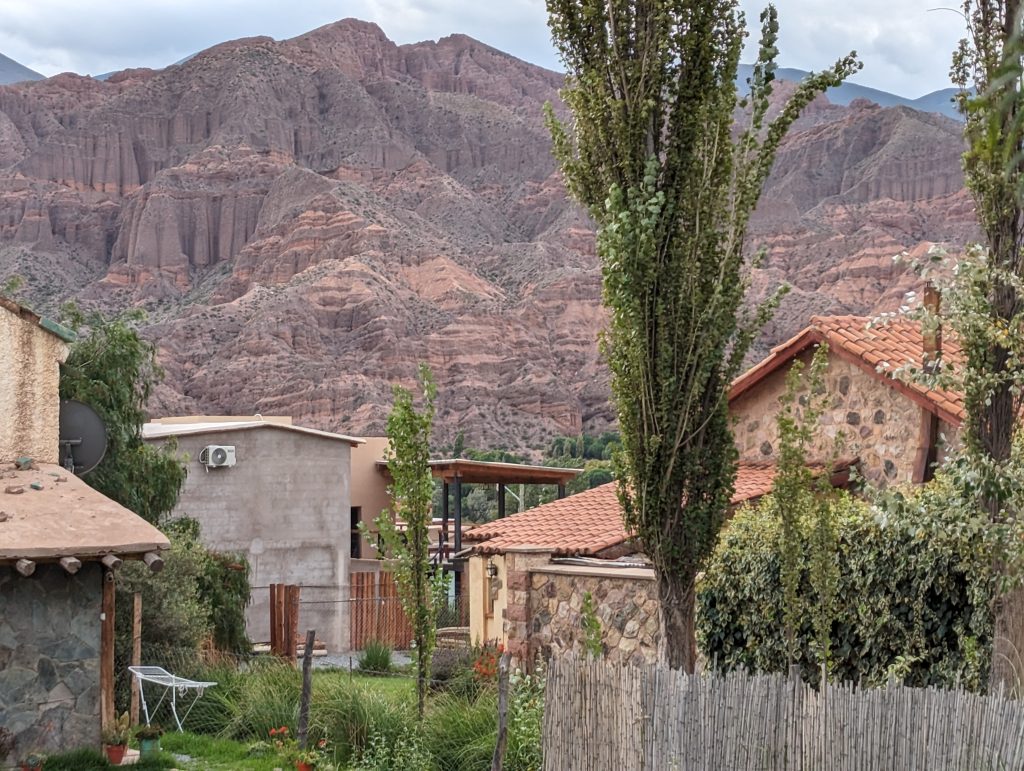
Quebrada Las Señoritas
There are a couple of hike options here, but in the rainy season only the short one was available (1.5 hours roundtrip – flat/easy hike). The trailhead is located in the town of Uquia, around 40 minutes driving from Tilcara. There is a nominal fee to be paid to the indigenous community that manages the reserve, and the visit must be done with a local guide. We first crossed Valle de la Luna, and then hiked through a canyon until reaching a kind of ampitheater at the end of the canyon. As the sun shines the mountains turn a deep terracotta color. It was a beautiful hike, and very accessible for most people.

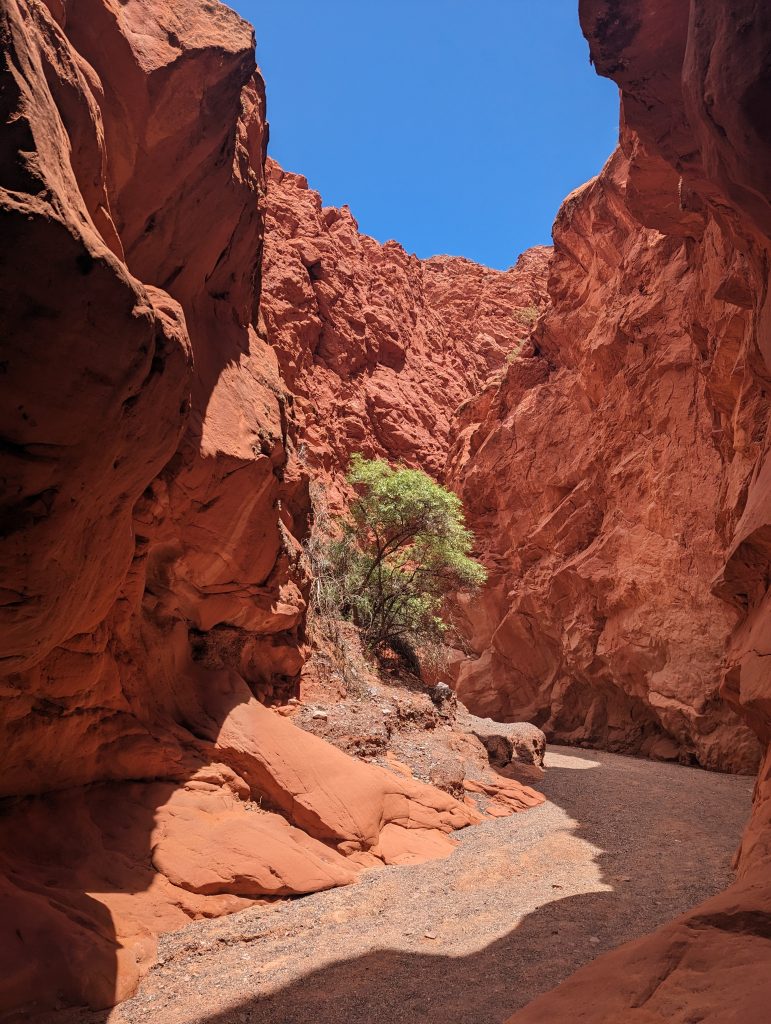
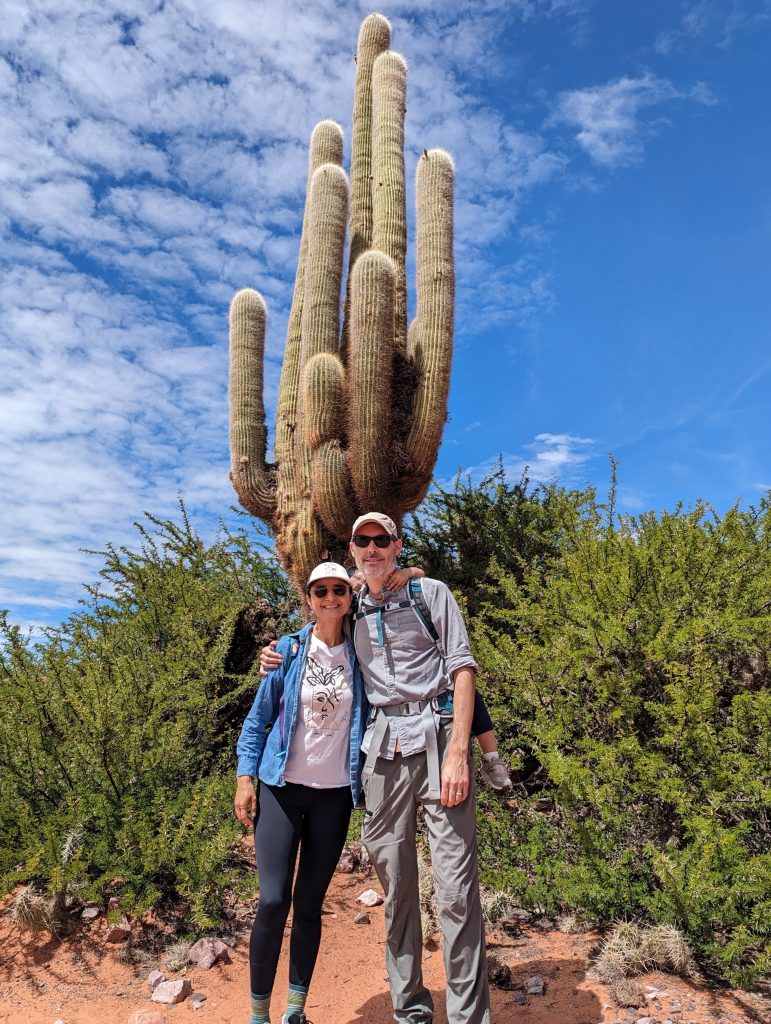
Cascada Garganta del Diablo (Tilcara)
This is a nice hike close to Tilcara where you walk along (and often across) the river until you reach a waterfall. There are two options to do this hike: one is to start close to town, which means a 5k walk (about 3 miles) one-way uphill plus the same distance for returning, and the other is to drive 8 km (about 5 miles) to the trailhead, and take a 1k hike. We did the latter. Innocent of the road conditions, we started driving on a one-lane gravel road shared by both directions, right at the edge of the mountain through a series of curves. Luckily we did not find many cars coming in the opposite direction, and we could enjoy the great views as we were going up the mountain. The hike itself is quite interesting along a gorge. There were rocks on the crossings so we never got our feet wet. At the end of the path there is a nice waterfall (not for swimming though). This was a fun hike with beautiful landscapes.

Horse Ride to Patapampa
Our daughter has been fond of horses ever since her first ride in Viñales, Cuba, so we decided to take a ride to enjoy the landscape and the closeness to the horses. We had a steep climb to the hill of Patapampa, where we could see the towns of Maimara, Tilcara, the Valley of Rio Grande and the mountains surrounding it. It’s an amazing 360-degree view.


Maimara – Cerro Paleta del Pintor
Maimara is a small and tranquil town, located in front of Paleta del Pintor, a hill that resembles a painter’s palette. We couldn’t find a single restaurant open at lunch time on the day of our visit in late February, so we got a couple of empanadas from a street vendor and strolled around. It’s a nice stopping point if you are in the area.

Serrania El Hornocal – Montaña De Los 14 Colores
This is one of the most dramatic sights we had in the Jujuy Province. The mountain displays a variety of colors organized in a triangle-like shapes, which are derived from the minerals contained in the rocks. To get there we went to the town of Humahuaca (45k from Tilcara on a paved road), and then drove 22k over a gravel road. We were warned that the road conditions were somewhat challenging due to erosion, and the altitude of the mountain (we went from 3,000m or 9,800ft above sea level to 4,300m or 14,000 ft). We decided to go in our rented car as it would give us the freedom to go in our own terms. The mountain only revealed itself once we were at the parking lot, so it was a great surprise! Although the day was cloudy, the sky opened up for a bit, enough to shine on some portion of the mountain for us to appreciate the effect of the reflection in the minerals. Bonus: A wild vicuña was grazing close to the lower view point, which made for a beautiful picture!
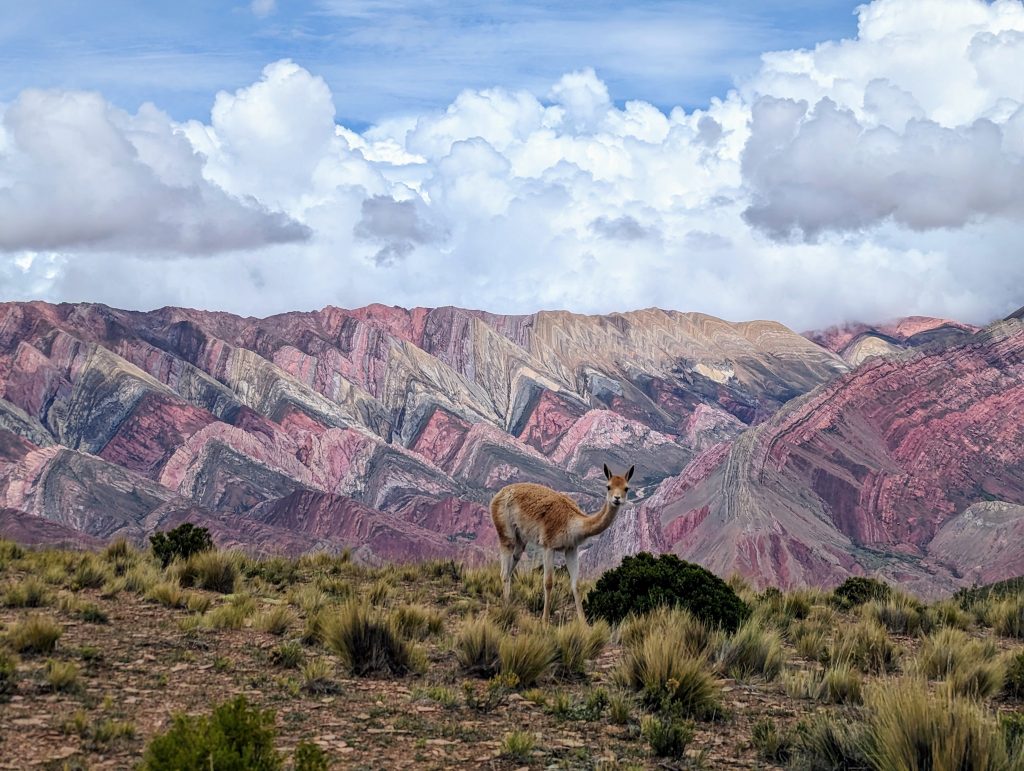
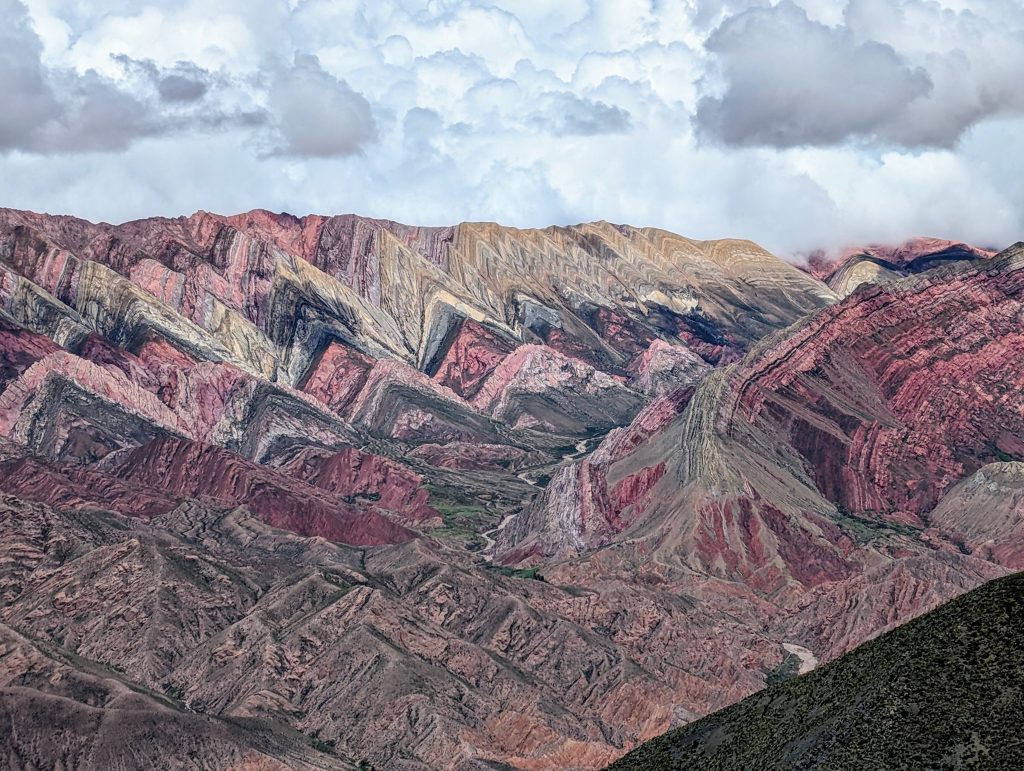
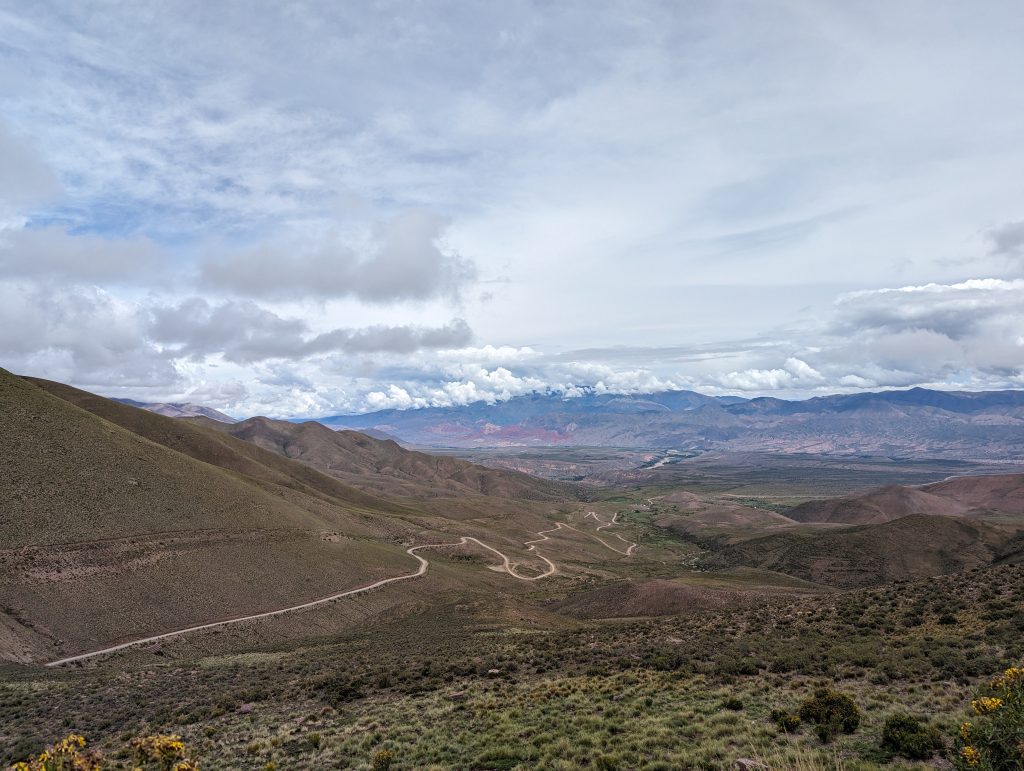
We visited the region in the summer which is the rainy season, and were lucky to be able to move around in the region and visit so many places. Jujuy will stay in our heart always!
Travel considerations with kids
Most of the towns we visited (e.g., Purmamarca, Tilcara) have a playground with swings, slides, etc. Although these are a bit dated, they were in reasonable condition for kids to enjoy. In Tilcara we learned about other activities such as a llama petting farm (Caravana de Llamas – we didn’t visit) and family-friendly horse rides. There are hikes for all levels. We had a carrier with us for our three-year-old, but older kids can do many of them by themselves. Some of the hotels have pools if that is a considerations. As for meals, restaurants are usually family friendly so if there are any food restrictions or preferences it’s easy to find one that can accommodate. There are pharmacies to buy medicines, sunscreen, clothes, etc. The key in the region is to have a plan for the next day, but for any kid who likes outdoors there are plenty of things to do, and our little daughter had a great time there.
Where did we stay?
Our apartment in Tilcara was one of the best lodgings we had in Argentina, and the main reason we decided to spend all our stay in Tilcara as opposed to moving through different towns. This place had the largest succulent plant collection that I have seen in a house, a back garden with a lot of flowers and many spaces to relax and disconnect. You can find it in Booking listed as “Apartamento en el Vivero, Tilcara.”
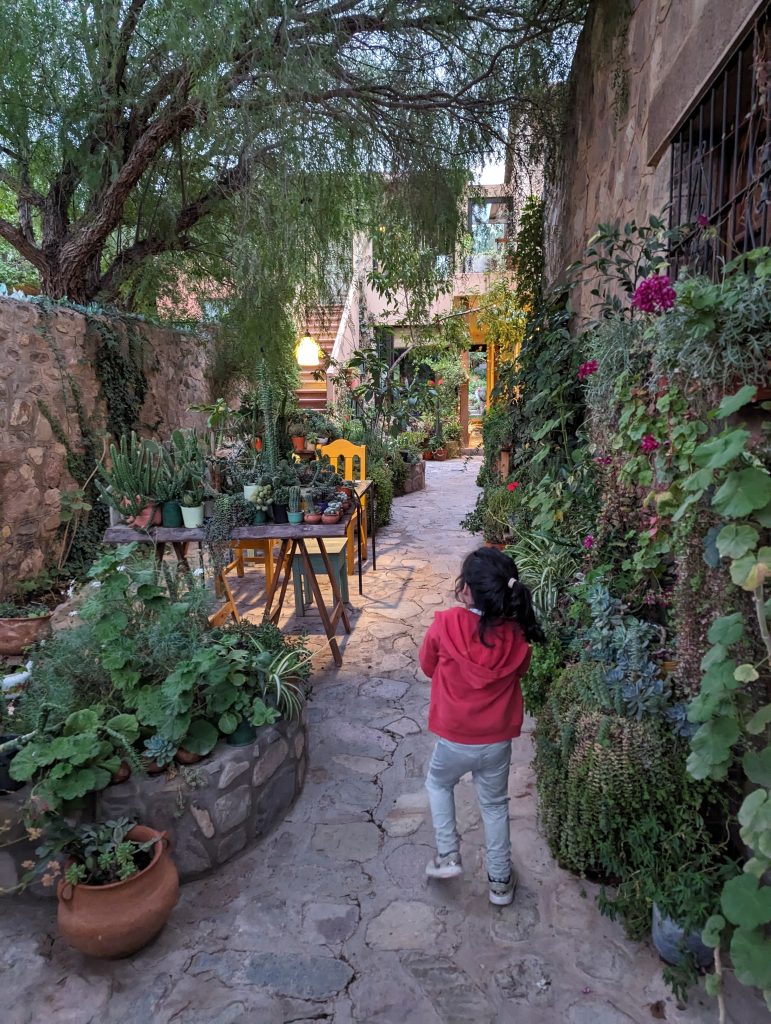
Jujuy in a Nutshell
Population: The province has 719,000 habitants approx. The towns we visited are small, for instance Tilcara has around 14,000 habitants, and Purmamarca 3,500.
Average Price of lodging: $30-$100
What did we like the most? The outstanding landscapes everywhere
What was challenging? We visited in the rainy season, and had to make the decision of not visiting the beautiful town of Iruya due to uncertainty in the road because of the rain. Also, we decided to not visit Salinas Grandes as it was basically a massive lake due to rain. Due to topography and basic infrastructure, mobility in the rainy season might have a big impact on any plans to move around.



